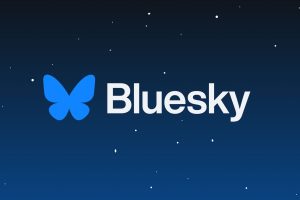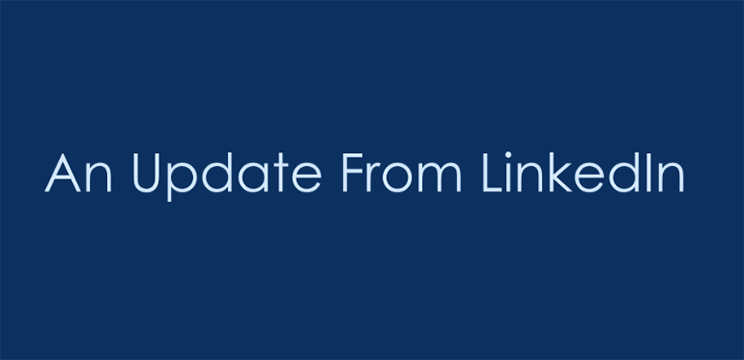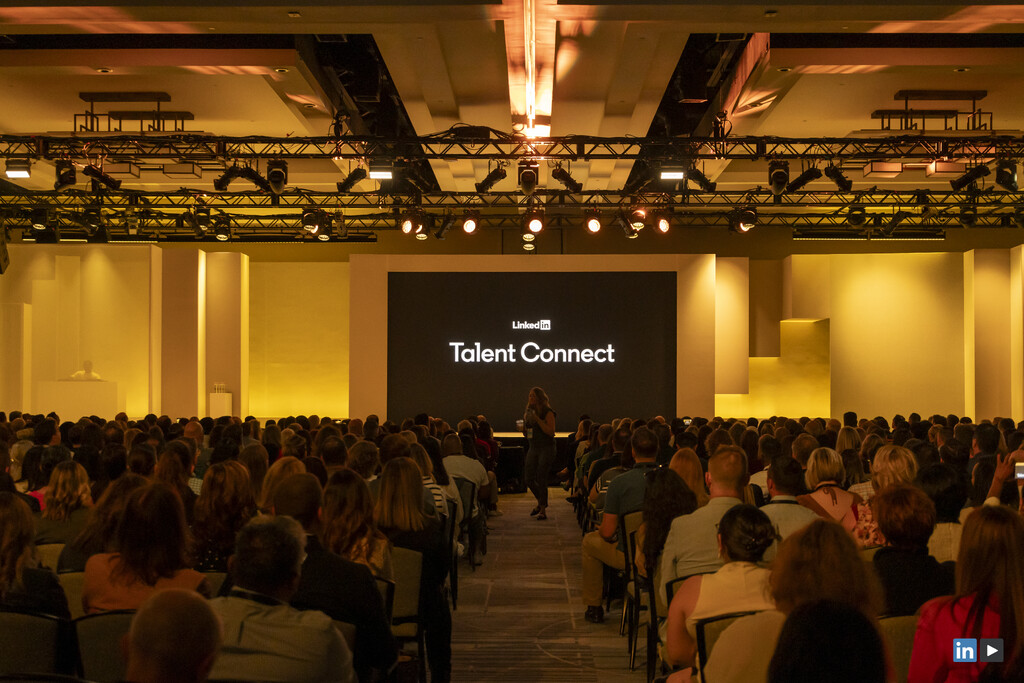Find your voice
As you go through your LinkedIn feed, pay attention to the topics that interest your connections, the questions they have, and how existing content on LinkedIn addresses those needs. Carve out your own unique voice that balances your expertise and your network’s interests while adding value to the LinkedIn community.
Use those insights to plan out some general topics and start thinking about specific posts you’d like to share. This helps you maintain a publishing consistency that keeps your content in front of your network, encouraging continued engagement. You might start with one post per week, increasing until you find a publishing cadence that makes sense for you and your connections.
Share knowledge and advice
When you’re ready to start posting, focus on sharing your knowledge, experience, and perspectives.
Here are some common topics that are widely sought on LinkedIn.
Share career tips or work lessons
Reflect on pivotal lessons and learnings throughout your career, offering insights for emerging or aspiring talent professionals. Sharing your own experience sheds light on firsthand learnings that spark conversation as others learn and reflect with you.
For example:
- What milestones, relationships, and opportunities were key to your career trajectory?
- What do you wish you’d known about navigating your career when you were just starting out?
- What have you changed to improve your work-life balance?
- Have you successfully implemented any initiatives to increase your own productivity?
- What lessons did you learn the hard way?
Comment on industry news and trends
Commenting on industry news and trends allows you to identify crucial developments in your field and put them in context for others. Share your unique perspective to connect with others about the current realities and future risks and opportunities in talent acquisition or talent development.
For example:
- What industry news or trends do your customers or peers need to understand in order to make good business decisions?
- What impacts will the latest news have on professionals in your industry?
- What do customers or peers keep asking for your perspective on, and what do you tell them?
- Which area of your industry are you keeping your eye on?
- What’s the next innovation that will disrupt your industry and what impact will it have?
Share your professional news or announcements
Announce personal achievements or updates, adding your own perspective around what prompted the changes or what came from them. Moments of evolution offer an ideal opportunity for deeper reflection and community connection.
For example:
- What lessons or insights have you learned from recent achievements or recognitions?
- What strategies or best practices helped you or your team reach important milestones?
- Are there any key takeaways from your new project, partnership, or initiative that could benefit others in your industry?
- What unexpected challenges did you encounter in your recent project or initiative, and how did you overcome them?
Provide a behind-the-scenes look at your office or an event
Let the community see your work in a new way by taking them behind the scenes of what you do. This can help others better understand your work, industry, and areas of expertise while sparking connections and curiosity from like-minded recruiters or learning and development (L&D) professionals.
For example:
- What unexpected insights or takeaways did you gain from a recent conference, speaking opportunity, or industry event?
- How have recent travels shaped your perspective?
- What’s a memorable conversation or moment from a recent event or meeting that others could learn from?
- How did your latest conference or client visit challenge or validate your current strategies?
- How are you structuring one-on-ones with your team members to be more effective?
Break down company news
Explain important news or changes happening in your company, with commentary around why it matters to you. Sharing your own experience can help others connect more deeply to what’s changing.
For example:
- What’s your perspective on a recent product launch? Who will it help and what’s the main benefit?
- What was your role in shaping the latest changes at your company? Are there any team members you want to call-out for their role?
- Do you have a unique take on a new policy or announcement?
- How will the latest earnings, investment news, and growth updates inform the future of your company and team?
- What insights can you offer about a recently published news story about your company?
Pay attention to text formatting
Proper formatting transforms good content into engaging posts. Take the extra time to incorporate a few elements that can improve your post delivery.
Lead with a strong opening hook
The first two lines of your LinkedIn posts are critical for grabbing your audience’s attention. Begin your post with a unique perspective or key takeaway that encourages readers to learn more.
For example:
- Share a surprising statistic: “The average manager wastes 12 hours per week. Here’s how to get that time back.”
- Ask a thought-provoking question: “What if your top-performing employee is actually hurting your team?”
- Make a bold statement: “Remote work is overrated.”
- Share a personal story: “I just turned down a job that would’ve doubled my salary. Here’s why . . .”
- Tease research findings: “I analyzed 1,000 cold emails. The findings surprised me . . .”
Use short paragraphs
Use one-to-three-sentence paragraphs throughout the body of your post, starting each new thought on a new line.
For example:
- Present the main idea
- Back up the idea with a key stat
- Share your unique perspective on the idea
- Summarize actionable takeaways
Breaking up your text with strategic line breaks and white space makes your content more inviting and easier to read, especially on mobile devices where many LinkedIn users consume content.
Incorporate relevant hashtags
Hashtags are searchable and can be followed, allowing your content to show up in searches and feeds of professionals who follow those topics. Add a few relevant hashtags either in line with your content or at the end of your post to increase your content’s discoverability and reach.
Capitalize the first letter of each word in your hashtags to make them easier to read, make them accessible to screen readers, and prevent misinterpretation.
Tag people and companies
Tagging a person or company in your LinkedIn post encourages engagement and comments. That’s because a mention triggers a notification that takes LinkedIn members straight to the post where they (or the Company Page they manage) are mentioned.
LinkedIn members don’t need to be your connection to be mentioned by you, though some members may have turned this feature off.
End with a call to action
End your posts with a specific call to action that encourages engagement.
For example:
- Ask a focused question about readers’ experiences
- Invite specific examples from your readers’ work
- Seek new perspectives
- Request opinions on a particular aspect of your post
- Encourage readers to share the post with someone who could benefit from the information
Use various content formats
Each format has its own unique strengths and can be used to share your expertise, drive engagement, and spark meaningful conversations in different ways.
Video
Videos get 1.4x more engagement compared with other formats on LinkedIn, making them an impactful way to share content. For example, videos can be used to broadcast from industry events, record an explainer video or demo, or share a behind-the-scenes look at your office.
Here are some best practices for sharing videos on LinkedIn:
- Hook viewers quickly with a striking visual or a good opening line
- Keep your videos between 30 seconds and two minutes
- Film in a quiet spot
- Face your light source (natural light is ideal)
- Shoot vertically
- Add captions for accessibility
Images
Photos, illustrations, and graphics can capture your audience’s attention in the busy feed and enhance your message. For example, you can share a team photo, product screenshot, or an infographic to tell a richer story than words alone would allow.
Make the most of photos by:
- Using clear, high-quality images
- Adding descriptive alt text to improve the accessibility of your posts
- Tagging people in your photos for greater engagement
Posts that include images tend to get twice as many comments as other posts, making them a worthwhile format to boost engagement.
Polls
Polls are a quick and easy way to get your audience engaged in a topic. You can use polls to understand your audience’s interests, gather their opinions on a topic or trend, or gauge their feelings on a relevant professional debate.
Get the most out of polls by:
- Reviewing poll participants and their answers, and following up to continue the conversation
- Asking people to leave comments with more detail about their response
- Sharing the results of your poll in future posts
Documents
Documents allow you to upload and share slide presentations, portfolios, and PDFs with your audience. For example, you can share detailed career advice, an original data report, or event content.
Increase engagement with your documents by:
- Adding a summary of your topic as the accompanying text with your posts, adding a compelling hook that motivates people to click through to learn more
- Use @mentions to give credit to others who contributed to the document or who are referenced in the document
- Give your document a relevant title so people know what to expect from it
Keep up the momentum
Consistency and iteration can help you maintain engagement with your audience long-term. Here are four ways to keep up the momentum.
Reply to comments
Meaningful comments that address the content of your posts are an extremely valuable form of engagement. While it’s fairly easy to react to a post or repost something on your feed, a thoughtful comment requires more effort and demonstrates that your content stood out.
Replying to comments is a proven way to keep the conversation going and show your audience that you value their perspectives. Thank viewers for their feedback, answer questions, and ask for additional detail to drive deeper connections and conversations. For example, “Hi Jen, Thank you for sharing; that’s a great idea! Can you elaborate on how you . . .”
Keep a running list of content ideas
Continually gather new content ideas so you can maintain a consistent publishing schedule.
Gather inspiration from the comments on your post, trending topics on LinkedIn News, and content from your LinkedIn feed that makes you think. You might also come up with topics while in a meeting, at a conference, or right before you fall asleep at night.
Come up with a system to store these ideas, such as a notepad, an app on your phone, or a task in your project management software. Jotting down ideas as they come up can make it easier to regularly draft and post engaging LinkedIn posts.
Try new things
Experimenting is an invaluable approach to finding new ways to engage your audience. Take inspiration from posts you see in your LinkedIn feed, and brainstorm new ways to present your content and connect with your audience.
For example:
- Try a content format you haven’t used before, like a poll or document
- Change up your post length
- Insert some humorous posts into your content mix
- Test different images, like screenshots, team photos, and infographics
- Incorporate more — or fewer — emojis
- Ask a question
- Adjust your posting times and frequency
- Weigh in on different topics
Measure your success
You can improve your content engagement by learning what’s working and what you need to change up.
LinkedIn post analytics provides insights into the impact of your content so you can customize your strategy for creating content and engaging your audience.
Post analytics include:
- Impressions: The number of times your post was shown on LinkedIn
- Members reached: The number of distinct members and Pages that saw your post
- Reactions: The number of reactions (likes, celebrates, etc.) your post received
- Comments: The number of comments on your post
- Reposts: The number of times people shared your post to their feed
- Top demographics of unique views: Demographic information about the people who viewed your content
You can also use Analytics and tools to see aggregate analytics, your top performing posts, and some ideas for your next post.
Used together, these tools can help you identify the content that works best and refine your approach so you can grow engagement over time.
Join the creator community
To learn more about best practices and to engage with the broader community of content creators, follow the LinkedIn Guide to Creating. You may also want to subscribe to the bimonthly Create Possibilities newsletter.
Final thoughts: Consistency and authenticity are they key to engagement
The secret to an engaging LinkedIn post isn’t about following a rigid formula. It’s about showing up consistently, sharing authentic and relevant insights, and genuinely engaging with your network. While best practices can guide you, it’s your unique voice and perspective that will truly set your content apart.
Think of each post as a conversation starter, not a broadcast. When you share experiences that matter to you, talk about challenges you’ve overcome, or offer insights you’ve gained, you create space for meaningful professional dialogue. These authentic exchanges often lead to unexpected opportunities and connections.
Remember: Your perspective is valuable, even if it feels familiar to you. What might seem obvious based on your experience could be exactly the insight someone else needs to hear today.










